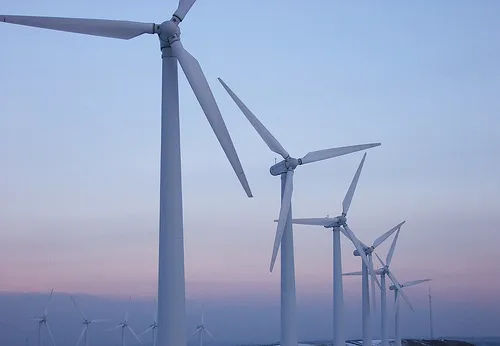
Wind energy to eclipse aerospace as top user of advanced composites by 2020
The demand for advanced structural materials by wind turbine makers will surge five-fold from $2.5b in 2011 to $15.4b in 2020.
According to a release, wind energy, powered by stringent renewable energy standards and larger installations offshore, will overtake aerospace as the largest user of advanced composite materials. The overall market for advanced composites – based on carbon fibers, carbon nanotubes, and graphene – more than triples to $25.8 billion by 2020, according to a research report.
The use of advanced structural materials by makers of wind turbines will increase from $2.5 billion in 2011 to $15.4 billion in 2020, as growth in aerospace lags, despite the introduction of new aircraft, such as Boeing’s Dreamliner, that use large quantities of carbon fiber-reinforced plastics (CFRPs), according to the report by Lux Research. In 2020, wind energy will account for nearly 60% of the market for composites, compared with the current 35%.
“Despite serving as a flagship for commercial success of CFRPs, the volumes in aerospace are relatively limited. Boeing currently has the capacity to produce only two Dreamliners per month and is striving to raise this figure to 10 by the end of 2013,” said Ross Kozarsky, a Lux Research Analyst and the lead author of the report. “In wind, 18,405 megawatts of capacity were added in the first six months of 2011, which translates to over 1,000 turbines per month.”
Lux analysts found that the combined market for these materials would rise from $7.0 billion in 2011 to $25.8 billion in 2020, reflecting an average compound annual growth rate (CAGR) of 16%. Among Lux Research’s other key conclusions:
Aerospace to lose ground but has potential upside. The aerospace market will grow at a healthy CAGR of 13% over the next decade to $6.3 billion, boosted by Boeing’s 787 Dreamliner and Airbus’ A350 XWB, both of which are built with 50% advanced composites. Boeing’s year-end decision on whether to use aluminum or carbon fiber composites for its next-generation 737 aircraft offers a significant upside.
Auto industry still a sleeping beast. The auto industry will be the second-largest growth sector with a CAGR of 17% and a spending of $2.1 billion in 2020. Still, the sector will remain far short of its mammoth potential over the next decade.
Oil and gas remains a laggard. Industry-wide conservatism and persistence with steel will keep oil and gas a laggard in the use of advanced composites. This sector will register the slowest growth – a mere 5% CAGR, rising to $427 million in 2020.








![Cross Domain [Manu + SBR + ABF + ABR + FMCG + HBR + ]](https://cmg-qa.s3.ap-southeast-1.amazonaws.com/s3fs-public/styles/exclusive_featured_article/public/2025-01/earth-3537401_1920_4.jpg.webp?itok=WaRpTJwE)
![Cross Domain [SBR + ABR]](https://cmg-qa.s3.ap-southeast-1.amazonaws.com/s3fs-public/styles/exclusive_featured_article/public/2025-01/pexels-jahoo-867092-2_1.jpg.webp?itok=o7MUL1oO)









 Advertise
Advertise


